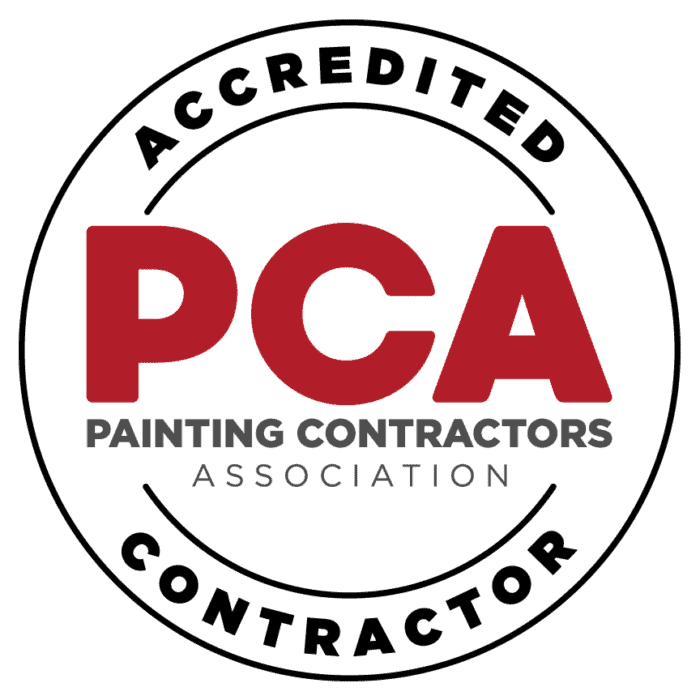When researching paint durability for exterior siding, homeowners face a confusing maze of conflicting claims and marketing promises. You want straight facts about which paint type will protect your investment longest, but every source seems to tell a different story. Here’s the truth: acrylic paints generally offer the best durability for exterior projects, latex paints excel in flexibility and easy maintenance, while oil-based paints still outperform in specific scenarios like adhesion and gloss retention.
Understanding acrylic vs latex vs oil-based paint durability isn’t just about picking the most expensive option—it’s about matching the right paint characteristics to your specific situation. Your climate, siding material, maintenance preferences, and budget all factor into which paint type will deliver the best long-term performance for your home.
Why Paint Durability for Exterior Siding Matters More Than You Think
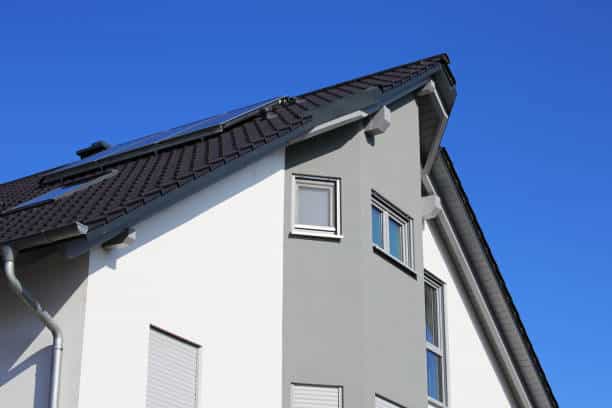
Your siding paint faces relentless attacks from UV rays, temperature swings, moisture, and wind-driven debris every single day. Poor paint durability for exterior siding doesn’t just mean an ugly home—it can lead to wood rot, costly repairs, and thousands in unexpected maintenance expenses.
Most homeowners underestimate how much their paint choice affects their long-term costs and peace of mind. A paint that looks great initially but fails after three years will cost far more over time than a premium option that protects your siding for a decade or longer.
The challenge is separating marketing claims from proven performance. Paint manufacturers use different testing methods, and what works in laboratory conditions may fail in your specific climate and application. That’s why examining real-world durability factors becomes so important for making an informed decision.
Understanding the Three Main Paint Types for Exterior Siding
Before diving into specific durability facts, let’s clarify exactly what we’re comparing when we examine acrylic vs latex vs oil based paint durability.
Acrylic Paint Composition
Acrylic paints use acrylic resins as their primary binder, creating superior adhesion, UV resistance, and flexibility. These paints work exceptionally well on wood siding, fiber cement, masonry, and previously painted surfaces. Premium examples include Sherwin-Williams Duration and Benjamin Moore Aura.
Latex Paint Characteristics
Latex paints use water-based formulas with vinyl or acrylic binders (but not 100% acrylic like pure acrylic paints). They offer easier application and cleanup while providing good flexibility for expanding and contracting siding materials. Common residential choices include Behr Premium Plus and Valspar latex formulations.
Oil-Based Paint Properties
Oil-based paints use natural oils or synthetic alkyds as binders, known for excellent penetration and hard, durable finishes. They dry slowly, have higher VOC content, and require mineral spirits for cleanup. Examples include Rust-Oleum Protective Enamel and Sherwin-Williams ProClassic Alkyd.
Fact 1: Adhesion Strength Determines Long-Term Paint Durability for Exterior Siding
When comparing acrylic vs latex vs oil based paint durability, adhesion strength often determines whether your paint job lasts years or decades.
Acrylic Paint Adhesion Performance
Acrylic paints bond strongly to the widest range of substrates, making them excellent for mixed-material siding projects. They adhere well to wood, fiber cement, masonry, and previously painted surfaces without extensive surface preparation in most cases.
Oil-Based Paint Penetration Advantages
Oil-based paints penetrate deeply into bare wood fibers, creating mechanical bonds that can outlast surface adhesion. This makes them particularly effective on weathered or chalky surfaces where other paints might struggle to achieve proper adhesion.
Latex Paint Adhesion Limitations
Latex paints show weaker adhesion on glossy or chalky surfaces compared to acrylic and oil-based alternatives. However, proper surface preparation—including cleaning, sanding, and priming—can overcome most adhesion challenges regardless of paint type.
Professional exterior house painting contractors know that surface preparation often matters more than paint type for adhesion success. Power washing, scraping loose paint, and applying appropriate primers ensures strong adhesion regardless of which paint you choose.
Fact 2: UV and Fade Resistance Dramatically Affects Paint Durability for Exterior Siding
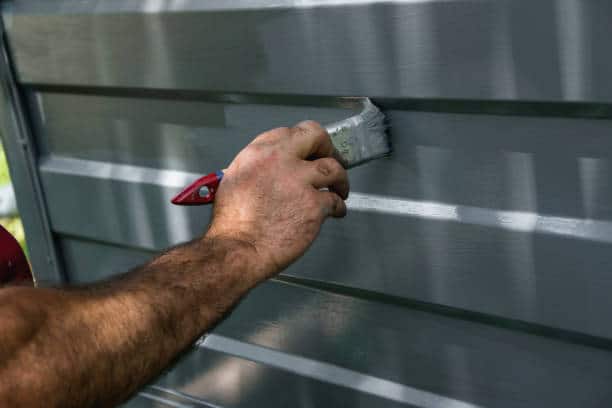
Ultraviolet radiation breaks down paint molecules over time, causing fading, chalking, and eventual paint failure. This factor heavily influences acrylic vs latex vs oil based paint durability in sunny climates.
Acrylic Paint UV Protection
Acrylic paints resist UV degradation better than other paint types, maintaining color vibrancy and protective properties longer. Premium acrylic formulations include UV-blocking additives that prevent molecular breakdown from sun exposure.
Latex Paint Sun Performance
Quality latex paints provide good UV resistance but typically fade faster than acrylic paints in direct sun exposure. The rate of fading depends heavily on the specific binder formulation and quality of UV-blocking additives.
Oil-Based Paint Color Stability Issues
Oil-based paints tend to yellow over time, especially in shaded areas or when used in lighter colors. This yellowing accelerates with age and can dramatically change your home’s appearance even when the paint film remains structurally sound.
For sunny climates and south-facing siding, acrylic paints typically provide the best long-term color retention and UV protection, making them the superior choice for paint durability for exterior siding in high-exposure areas.
Fact 3: Moisture Resistance Determines Paint Survival in Challenging Climates
Water is paint’s biggest enemy, causing everything from blistering to complete adhesion failure. Understanding how each paint type handles moisture is crucial for paint durability for exterior siding in humid or wet climates.
Acrylic Paint Moisture Protection
Acrylic paints offer superior moisture resistance and vapor transmission properties. They block liquid water while allowing water vapor to escape from behind the paint film, preventing the buildup that causes blistering and peeling.
Latex Paint Humidity Performance
Latex paints can blister or peel in damp climates if applied incorrectly or over inadequately prepared surfaces. However, quality latex formulations with proper application techniques can provide adequate moisture protection in most climates.
Oil-Based Paint Water Vulnerability
Oil-based paints absorb moisture over time, leading to eventual cracking and adhesion failure. While they initially repel water well, aging oil-based films become more porous and vulnerable to water penetration.
For coastal areas like Birmingham, MI, where homes face humidity and precipitation challenges, acrylic paints typically offer the best long-term moisture protection and paint durability for exterior siding.
Fact 4: Flexibility and Movement Tolerance Affect Real-World Durability
Exterior siding expands and contracts with temperature changes, and your paint must flex with these movements to avoid cracking. This flexibility factor significantly impacts acrylic vs latex vs oil based paint durability.
Acrylic Paint Flexibility Advantages
Acrylic paints maintain flexibility throughout their lifespan, adapting to seasonal wood movement without cracking or losing adhesion. This flexibility becomes particularly important for wood siding in climates with significant temperature swings.
Latex Paint Movement Accommodation
Latex paints offer moderate flexibility, generally handling normal siding movement well. However, they may not perform as well as acrylic paints in extreme temperature conditions or on substrates with significant expansion and contraction.
Oil-Based Paint Brittleness Problems
Oil-based paints dry to a hard, brittle finish that becomes increasingly prone to cracking as it ages. Substrate movement that wouldn’t affect flexible paints can cause oil-based finishes to crack and fail prematurely.
For siding in freeze-thaw climates or areas with extreme temperature variations, acrylic paints typically provide superior flexibility and longer-lasting paint durability for exterior siding.
Fact 5: Proven Longevity and Recoating Cycles Show True Value
Real-world performance data reveals significant differences in how long each paint type actually protects exterior siding before requiring recoating.
Acrylic Paint Lifespan Data
Properly applied acrylic paints typically last 8-12+ years on exterior siding, with premium formulations achieving even longer lifespans in favorable conditions. This longevity makes acrylic paints cost-effective despite higher initial material costs.
Latex Paint Service Life
Quality latex paints generally provide 5-8 years of protection depending on climate conditions and application quality. While shorter than acrylic lifespans, latex paints often justify their lower durability through reduced initial costs and easier recoating.
Oil-Based Paint Durability Reality
Oil-based paints typically last 7-10 years but may require scraping and extensive surface preparation for recoating due to their tendency to become brittle and crack. This preparation requirement can make oil-based recoating more expensive than initially apparent.
Professional contractors track these lifecycle patterns to help clients understand true long-term costs. When evaluating paint durability for exterior siding, consider both lifespan and recoating complexity, not just initial material costs.
Fact 6: Surface Finish and Wear Resistance Impact Daily Performance
Different paint types produce varying surface characteristics that affect both appearance and durability over time.
Oil-Based Paint Finish Quality
Oil-based paints produce the hardest, smoothest finish with excellent resistance to scuffing and mechanical damage. This makes them particularly valuable for trim, doors, and high-traffic areas where surface durability matters most.
Acrylic Paint Surface Characteristics
Acrylic paints create durable surfaces that resist most normal wear while maintaining some flexibility. They’re slightly softer than oil-based finishes but typically more resistant to cracking and weathering over time.
Latex Paint Wear Performance
Latex paints generally show less resistance to scuffing and mechanical wear compared to acrylic and oil-based alternatives. However, this softer surface often makes them more forgiving for touch-ups and spot repairs.
For high-wear areas like entry doors and window trim, oil-based paints may still offer advantages despite their other limitations. For general siding applications, acrylic paints usually provide the best balance of durability and long-term performance.
Fact 7: Environmental Impact and Regulatory Compliance Affect Future Availability
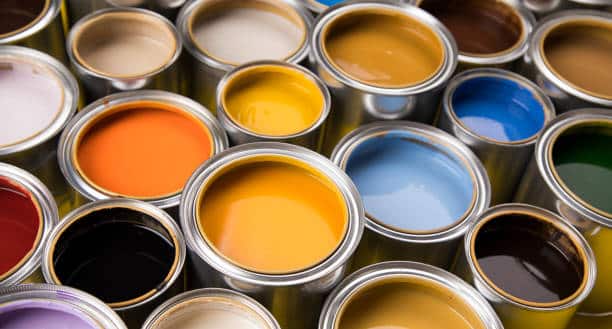
Environmental considerations increasingly influence paint selection and long-term planning for exterior siding projects.
Acrylic and Latex Environmental Benefits
Both acrylic and latex paints offer low-VOC formulations that comply with modern environmental regulations. They’re safer for applicators and building occupants while meeting green building requirements in most jurisdictions.
Oil-Based Paint Regulatory Challenges
Oil-based paints contain higher VOC levels and face increasing regulatory restrictions in many states and municipalities. This trend may limit future availability and increase costs for oil-based options.
Health and Safety Considerations
For property managers and business owners, the health implications of paint choices matter for worker safety and building occupant welfare. Low-VOC acrylic and latex paints reduce exposure risks compared to traditional oil-based formulations.
When planning long-term maintenance strategies, consider that environmental regulations may eventually phase out oil-based paints for most residential applications, making acrylic and latex paints the more sustainable choices for paint durability for exterior siding.
Common Questions About Paint Durability for Exterior Siding
Which Paint Lasts Longest on Wood Siding?
Acrylic paints typically provide the longest lifespan on wood siding, lasting 8-12+ years with proper application. Their flexibility and UV resistance make them ideal for wood’s expansion and contraction cycles.
Is Oil-Based Paint Still Better for Trim and Doors?
Oil-based paints still offer advantages for trim and doors where surface hardness and smooth finish quality matter most. However, premium acrylic paints now provide comparable durability with easier maintenance.
Why Do Acrylic Paints Resist Fading Better?
Acrylic resins naturally resist UV breakdown better than other binder types. Premium acrylic paints also include advanced UV-blocking additives that preserve color and film integrity longer than latex or oil-based alternatives.
Can Latex Paint Work Well in Humid Climates?
Quality latex paints can perform adequately in humid climates with proper surface preparation and application techniques. However, acrylic paints typically provide better moisture resistance and longer-term durability in challenging humidity conditions.
How Often Should Different Paint Types Be Recoated?
Acrylic paints typically need recoating every 8-12 years, latex paints every 5-8 years, and oil-based paints every 7-10 years. Actual timing depends on climate exposure, surface preparation, and application quality.
Making Color Choices That Enhance Durability
Your color selection can significantly impact paint durability for exterior siding, regardless of which paint type you choose.
Darker colors absorb more heat and UV radiation, potentially shortening paint life in sunny exposures. Lighter colors reflect heat and UV rays, often lasting longer but showing dirt and wear more readily. Professional painters understand these relationships and can guide you toward smart paint colors that balance aesthetic appeal with long-term durability.
Color stability varies between paint types as well. Acrylic paints typically maintain color integrity longest, while oil-based paints may yellow over time, and some latex formulations may fade more quickly in direct sun exposure.
Professional Application Makes the Difference
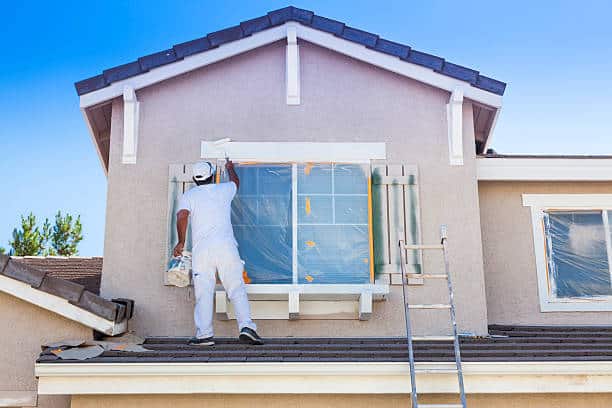
Regardless of which paint type offers the best theoretical durability, professional application techniques often determine whether you achieve that potential performance in real-world conditions.
Proper surface preparation, primer selection, weather timing, and application methods can extend any paint’s lifespan significantly. Conversely, poor application can cause even the highest-quality paint to fail prematurely.
Don’t let another season pass while your siding remains vulnerable to weather damage and deterioration. The experienced team at Trio Painting understands the nuances of acrylic vs latex vs oil-based paint durability and has helped countless homeowners in Birmingham, MI, achieve maximum protection and beauty for their exterior siding.
Our professional exterior house painting services include thorough consultation to determine the best paint system for your specific siding material, climate exposure, and performance expectations. We work with premium acrylic formulations, quality latex paints, and specialty products to ensure you get optimal paint durability for exterior siding regardless of which option best suits your situation.


